Atlas of Amazing Architecture – Book Review + Interview
The most incredible buildings you’ve (probably) never heard of
By Peter Allen
Published by Cicada Books ISBN 978-1-908714-87-9
Interview and review by Derek Brazell
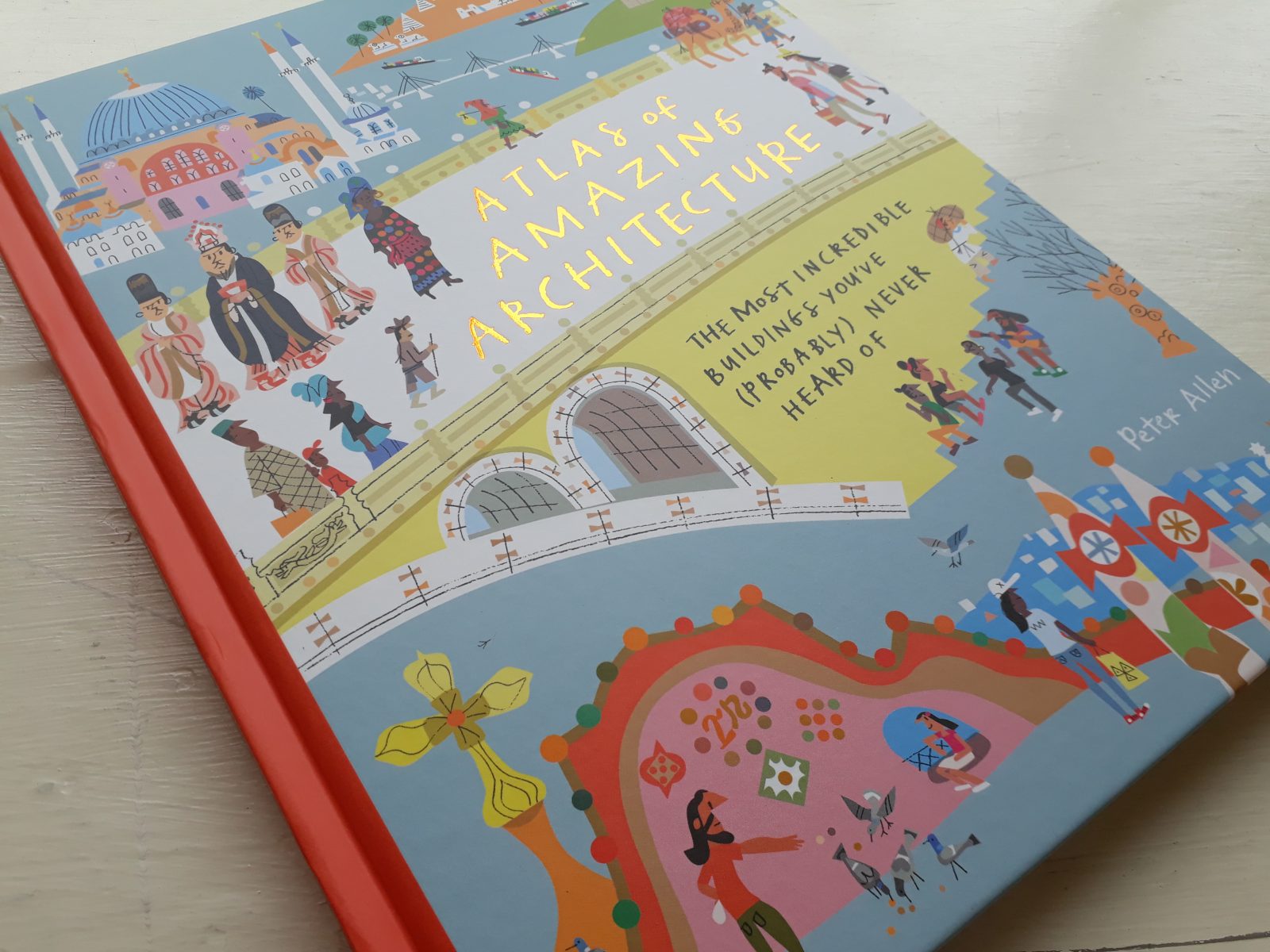
What a great idea for a book – uncovering the stories behind over 50 fantastic buildings spread across the world that aren’t as well-known as perhaps they could be: constructions with vision, impact and (fairly often) usefulness. Peter Allen, who created Atlas of Amazing Architecture along with Ziggy Hanaor, has produced a visual feast of buildings across the book’s 88 pages, and crucially includes the people who would have been there when the building went up and/or the contemporary people who might be visiting the same constructions now. So the Jamah Mosque in Iran includes modern day visitors sightseeing (and feeding the birds), whereas France’s Chartres Cathedral has both pilgrims from centuries ago entering one of the main arched doorways along with skateboarding kids hanging outside the other door. It’s a great combination.
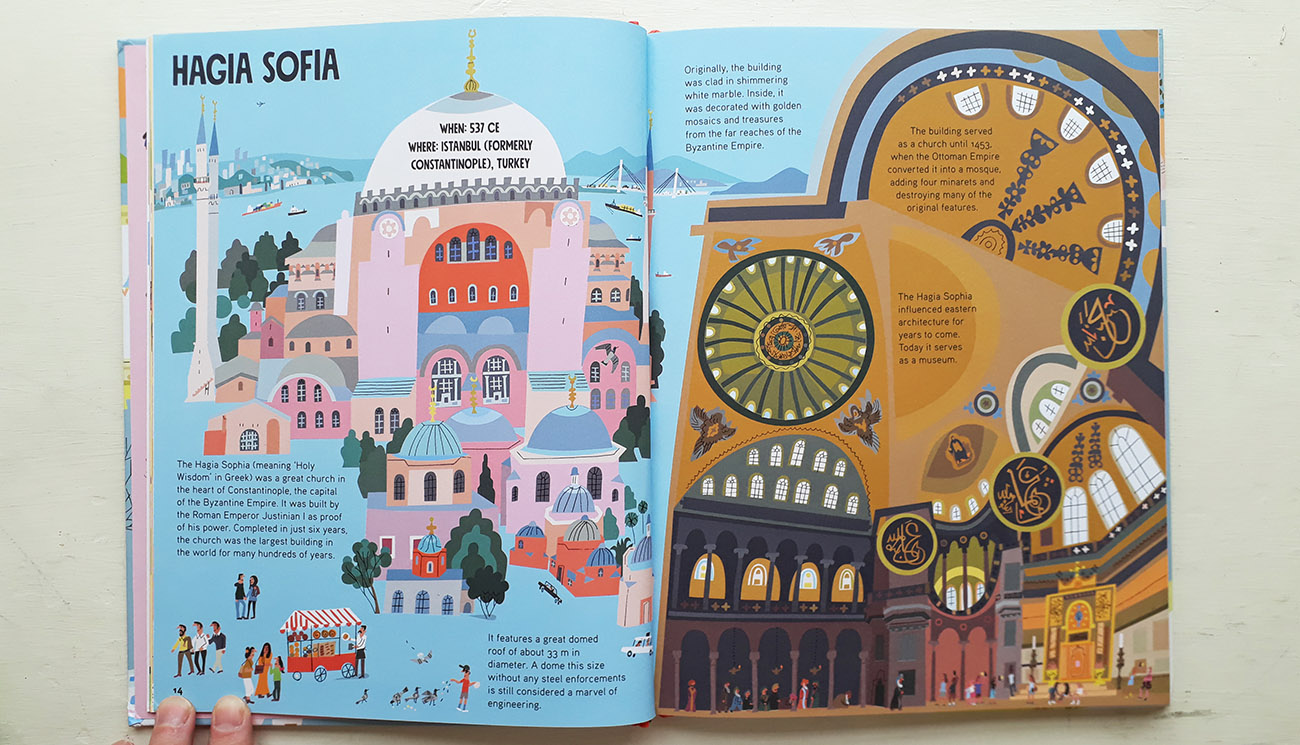
These smaller visual details add wit and humanise the buildings, reminding readers that most of them were made to accommodate humans for work, play, worship and shelter. From the expansive International Trade Fair of Dakar from 1975 to the tiny hideaway Ecuadorian Parasite House from 2019, there is a broad range of 20th/21stCentury buildings to contrast with the spectacular architecture of the huge interior of Turkey’s Hagia Sofia, the fantasy creation of Brighton Pavilion and Venice’s Palazzo Ducale from 1425 (complete with period flower sellers).
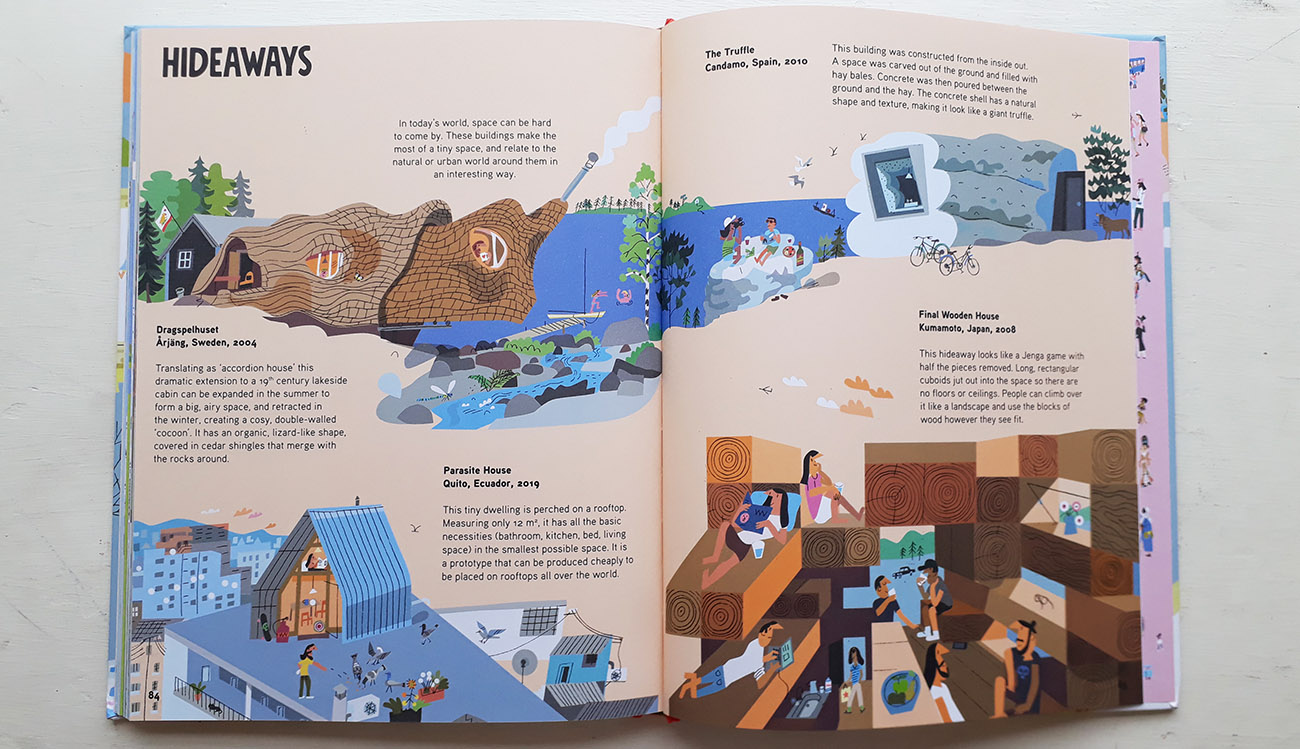
Peter’s illustrations are formed with inviting colours and busy, well-constructed compositions which keep the eye moving across the spreads to take in the multitude of details which he includes. I was taken with the amount of research the book must have required – it’s quite an achievement.
The book is an invitation to be a sightseeing tourist, but acts as a binding of different cultures, all of whom engage in creating buildings for function or to impress – often with the most grandiose of intentions. And by depicting the 21st century visitors, the fascination we have for beautiful and awe-inspiring constructions is reinforced (witness the tiny tourist buses in the bottom corner of the Shanxi Hanging Monastery spread).
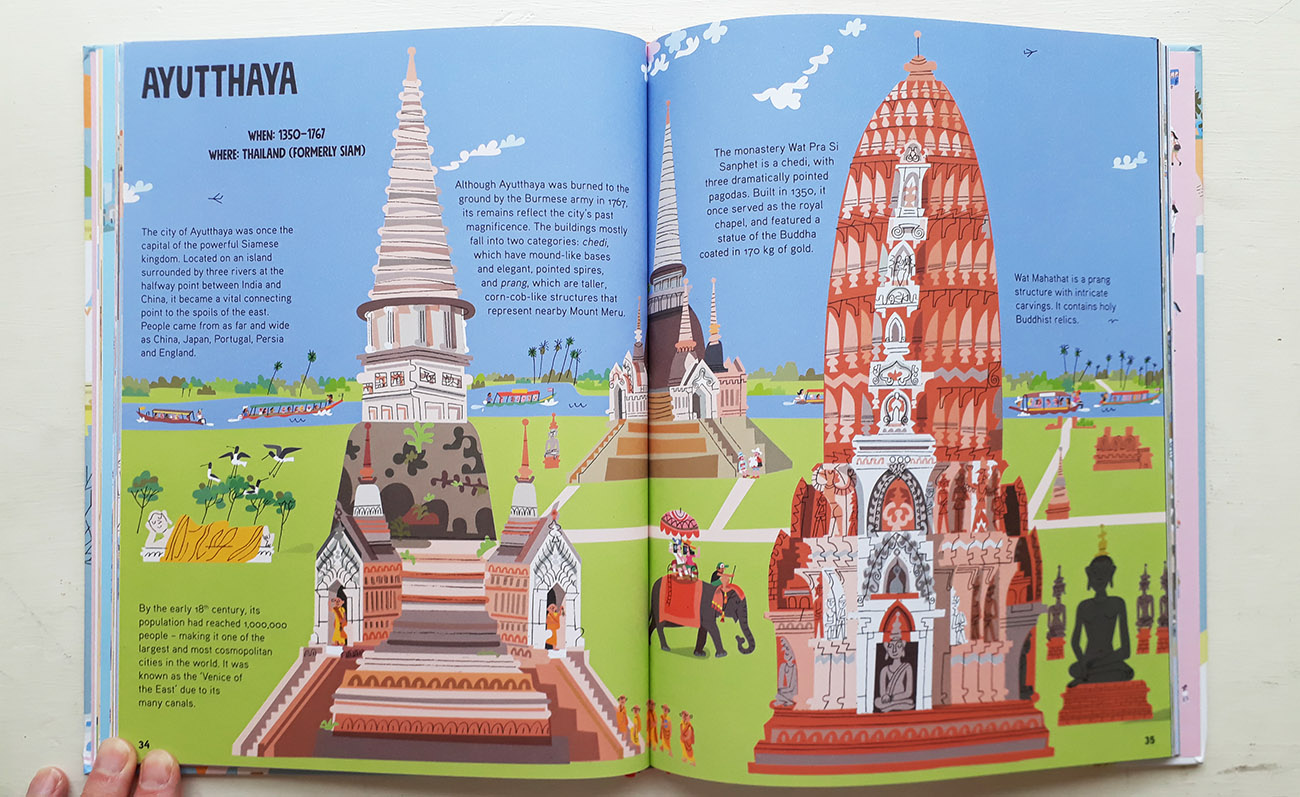
I talked to Peter Allen about research for the book, and challenges he overcame, but started asking how he selected the building that were included?
Peter: The book is about buildings that have caught my imagination because of the stories they tell, about the people that built them or had them built, the place where they are built and the means used to build them. Equally, they are buildings that I think it would be wonderful to live in or live with everyday.
Many of the buildings came to mind having found out about them whilst looking for reference material for previous illustration jobs; others I remembered for other reasons, like the Plank Houses that featured in the film Dead Man by Jim Jarmusch. When first looking into the project with Ziggy, (editor at Cicada Books) we saw how many architecture books were overly focused on western culture, so that got us looking more deeply at the less well documented corners of the globe, to provide a more balanced picture, and am really glad we made the extra effort as it was a great inspiration to find out about so many creative and resourceful people, from the down-to-earth to the utterly bonkers. The historical timeline provided, rather neatly, the framework for presenting the selected buildings.
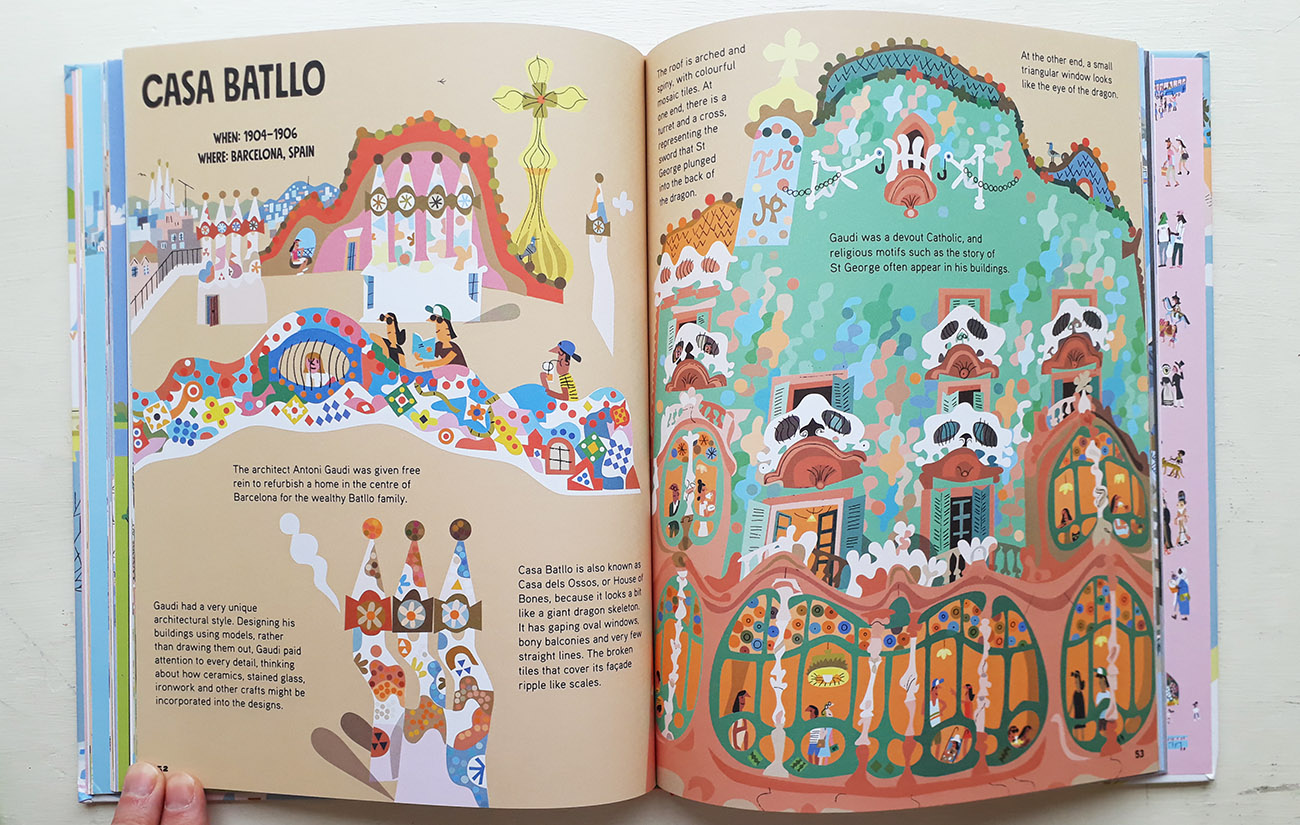
There must have been extensive research for the book – how did you go about that?
Because we tried stay off the beaten track as much as possible, the main difficulty became finding suitable visual reference material, almost all of which was from online sources. I spent a lot of repeatedly distracted moments trying to find the right views and then trying to find the same view but from the opposite direction or from further back or to the right. I sifted through countless holiday snaps and travel blogs, trying to see the detail hidden behind the head of the person in the photo. So, getting enough pictures to see fully around a building was time-consuming but good fun. Needless to say that most of this didn’t get used in the final images, but I found I couldn’t draw a building until I could see how it fitted together as a whole.
The Shanxi monastery has these incredibly ornate, ceramic sculptures of dragons all over its roofs but of course you can’t see all that when looking up from the bottom of the mountain.
I posted work in progress on Instagram and when working on the Hwaseong Fortress spread an old student of mine from South Korea left a message to say that the scene showed where the gateway where she left her bike when she cycled in to work every day. So she’s now in the picture riding in to work
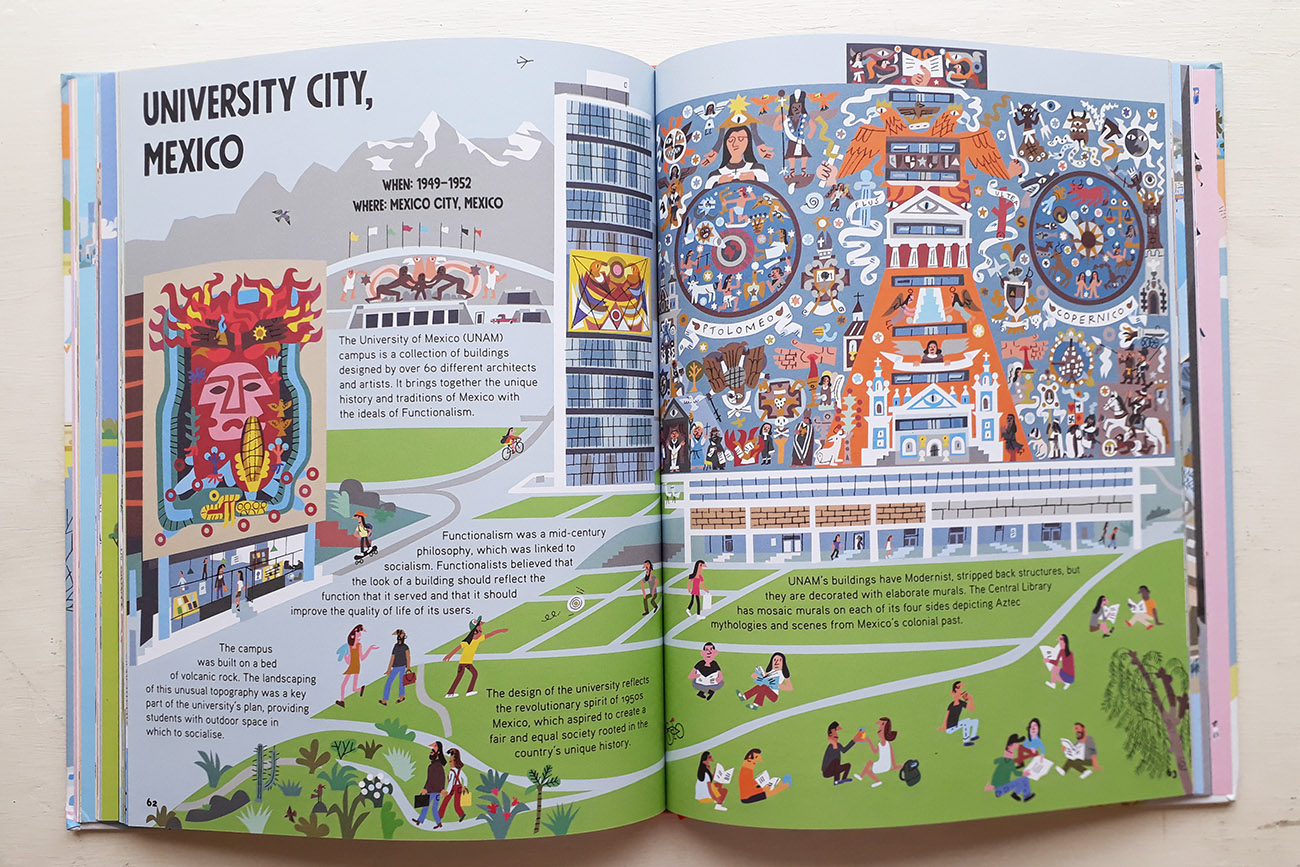
Were there any notable challenges in creating the illustrations / compositions?
I tried to depict the buildings as accurately as possible, because the way they had been designed or how they had been built was what made them interesting. However, I also wanted to make pictures that told a story, so the composition was adapted to fit – but only to a point. Nothing’s been turned upside down or whatever, and any liberties taken with the designs serve only to highlight certain features or to squeeze them into the picture. It took a fair bit of contortionism though get it all to fit, particularly with the text, but there were suprisingly few spreads where things got tied up in knots.
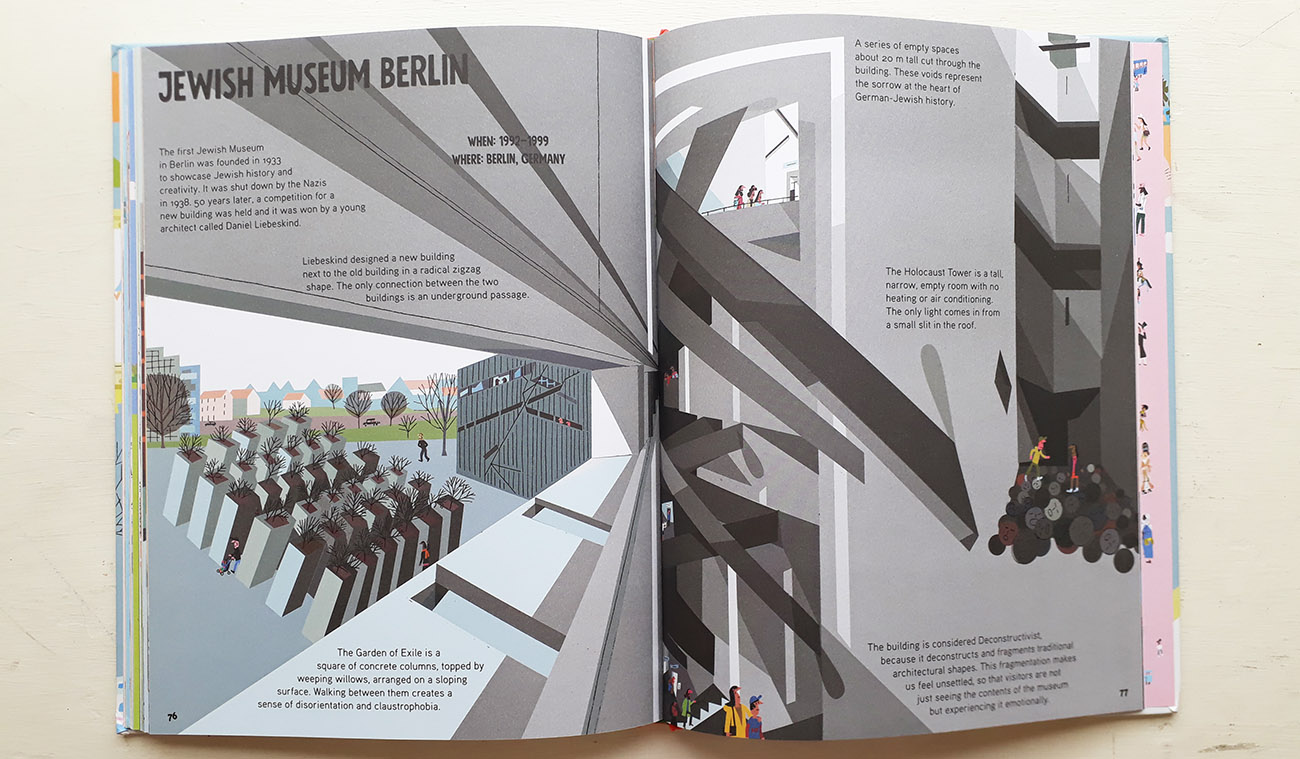
Are you happy with the book?
Yes totally. It was a very enjoyable corroboration with Ziggy, who wrote the text and suggested some of the buildings too. We seemed to have made very few compromises to the initial project to get the book to fit the historical and geographical framework which give the book its structure, and am really happy with the way it all balanced out (apart from Oceania, sorry down-under!). It would have been great had I been sent around the world to draw all these buildings on site, but in the meantime have found that imagining them all from afar to be really rewarding and worthwhile in its own right. That said, I’d still like to visit all these places though but if I had to choose just one I would start with the Jameh Mosque of Isfahan in Iran…
It’s easy to see why Peter found Atlas of Amazing Architecture such a fascinating project – it will draw young and older readers in, delighting in a wide ranging exploration of fascinating buildings who are now getting a bit more exposure thanks to this fun and informative book.
Back to News Page
